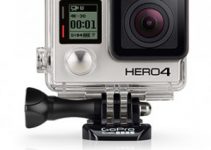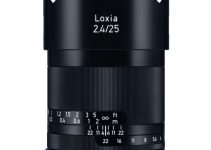So, you’ve got your brand new Pocket 6K, have you? Ready to hit the road? Even as new releases from Sony and most of all Panasonic are trying to become the “filmmakers most wanted” camera out there, the Pocket keeps a relevant position in the buzz all over the web.
Reasonably, one of the most discussed topics is rigging the camera itself. In fact, as no one can deny that the body is a steal, the Pocket 6K needs quite some rigging to become a functional cinema camera, hence the franken-rigs you’ve seen scouting online. Now, Armando Ferreira will lead us in a tour around his setup, a simple and effective all-around rig good for all the occasions.
Pocket 6K Ultimate Rig Components
- Pocket 6K Camera (B&H)
- Blackmagic Design URSA Viewfinder (B&H)
- SmallRig Universal Shoulder Pad (B&H)
- Kondor Blue 15mm Dual Rod Clamp (Amazon)
- Kondor Blue Rosette Extension Arm (Amazon)
- Kondor Blue Rosette Hand Grip (Amazon)
- LanParte VBP-02 V-Mount Battery Pinch (B&H, Amazon)
- Core SWX HyperCore Mini V-Mount Battery (B&H)
- Wooden Camera C-Box 3G-SDI and HDMI Converter (B&H)
- Kondor Blue 501 Baseplate (Amazon)
- Kondor Blue 6K Full Cage (Amazon)
- Kondor Blue D-Tap to BMPCC 6K 4K Power Cable (Amazon)
- Kondor Blue Mini Quick Release Plate (Amazon)
- Kondor Blue Samsung SSD Holder (Amazon)
- Kondor Blue Cine Magic Arm (Amazon)
- Deity S-Mic 2 Mic (B&H, Amazon)
- Boling P1 Pocket RGB LED Video Light (B&H, Amazon)
- Tilta Nano (B&H, Amazon)
Don’t let the intro of the video throw you off. The pieces Armando uses are indeed being custom made following his requests, but luckily for us, his work will be available to purchase to all of us.
So let’s get down with it. This rig, as all rigs do, begins with a base plate. The plate itself rests on a cushion made by SmallRig. Originally intended for a C200 rig, it has been repurposed without any problems in this kit.
It has ample padding, good for those long handheld shots when the weight of the camera suddenly becomes a burden on your shoulder.
On the front, we have two handles. At a first look, they may seem like standard handles, as we’ve seen in other rigs, but they hide a couple of interesting details.
The first one is the thumb-operated quick-lock on the rosette mount of the handles. With just a slight touch, Armando can adjust the angle of the handles following the needs of the moment!
That’s a nice feature to have when you start to feel the weight of the camera and even a slight change in posture can mean the world.
Couple that with the second detail, that is the adjustable length of the arm support, and you’ve got a perfectly adjustable rig, a swiss-knife that allows you to adapt as the hours go by and your needs get different as the fatigue builds up.
Once the foundation is set, we can move to the juice that keeps the whole set going. We’re talking of a (not-so-much) beefy V-Mount battery. The battery of choice here is a Hypercore Mini, a great option among the multitude of possible power options available.
It has a nice LCD screen that gives you the remaining runtime nice and clear so that you can read it even with a quick glance, plus it’s quite lightweight compared to other similar products.
The battery locks on a LanParte VBP-02, but not directly. In between the two, stands a handy little accessory from Wooden Camera called the Converter Box. Why is it there you may ask? Well, this is a nice trick up Armando’s sleeve.
The small breakout box acts as a passthrough for power connection and has an HDMI input that gets converted to three SDI outputs so that you can route the signal as you prefer. Teradek transmitter to the video village, secondary monitor for the AC, viewfinder (more on that later), whatever is your need you can distribute the image through a high-quality industry-standard interface to wherever you want it to be.
Before proceeding, it’s time for an important consideration. All the components we’ve seen up until now are mounted on the rear side of the rig. This disposition shifts the weight behind and in the end balances the setup. Once everything is mounted the camera and the lens will even out the weight difference, keeping the shoulder as a pivot point.
That is very important when designing a camera setup as having weight centered makes movements more fluid and is generally easier to operate. From the rear block, we also have a cable (again, made by Kondor Blue) that feeds power to the camera through the 12V input port, so that the internal battery charges whenever the Pocket 6K is mounted on the rig.
We mentioned a viewfinder earlier. That is, in fact, the choice made here to monitor the image, and it makes even more sense to have the converter box with the SDI output.
Armando has chosen to use the viewfinder made by Blackmagic for the URSA Mini Pro, a great piece of hardware with excellent image quality, a high-resolution screen and good build quality, but remember that it has only SDI inputs.
The camera itself locks on a quick-release plate made by Kondor Blue. It’s a side mounting plate since there is no space left to slide in the body from the back due to the presence of the battery and converter box.
The quick-release is a lifesaver in many situations, especially if you are an event shooter, a wedding shooter or just in any kind of set where speed is the key. Just a slight touch on the lever hand you can convert from handheld to tripod or gimbal.
Time to get to the camera itself. At the heart of the build stands the cage that wraps around the BMPCC 6K. The cage is manufactured by Kondor Blue and is clearly designed relying on the feedback offered by filmmakers. It has a ton of mounting points to screw in all your accessories, a bubble level, and most of all a couple of NATO rails.
What are those you may wonder? The NATO rail is a sliding lock mechanism developed by weapon manufacturers to secure in place add-ons for guns, such as scopes and similar items, but the system has been cleverly repurposed due to its strength, ease of use and durability to attach accessories to camera cages.
But the final cherry on top of this build is a step beyond the NATO rail, we could say it’s kind of an evolution from there. The cage has, in fact, a series of small quick release plates that are all over the cage itself. These little accessories allow you to easily swap in and out any kind of add-on.
We can see Armando going from having a small LED light to a microphone in just mere seconds. It’s amazing, indeed. And almost anything (light enough!) can be attached through that plate. You can have, for instance, SSD holders, mic holders, adapters that fit on small lights – unbelievably useful and unbelievably quick.
Drawing the conclusions of this long review of the rig built by Armando we can sum it up in two words: speed and adaptability. It’s clear that the main focus here was modularity. Ferreira was looking for a configuration that he could change quickly to adapt to any kind of situation, and he nailed it!
He can go from one setup to another one in a matter of seconds, rivaling with Formula One pit stops as we watch the rig transform from handheld with a LED light to tripod and mic. Simple and effective, that’s the better description we can make of it. What do you think, guys? Is this going to be your next Pocket 6K setup?
[source: Armando Ferreira]
Order Links:
Blackmagic Design Pocket Cinema Camera 6K (B&H, Amazon)
Disclaimer: As an Amazon Associate partner and participant in B&H and Adorama Affiliate programmes, we earn a small comission from each purchase made through the affiliate links listed above at no additional cost to you.



